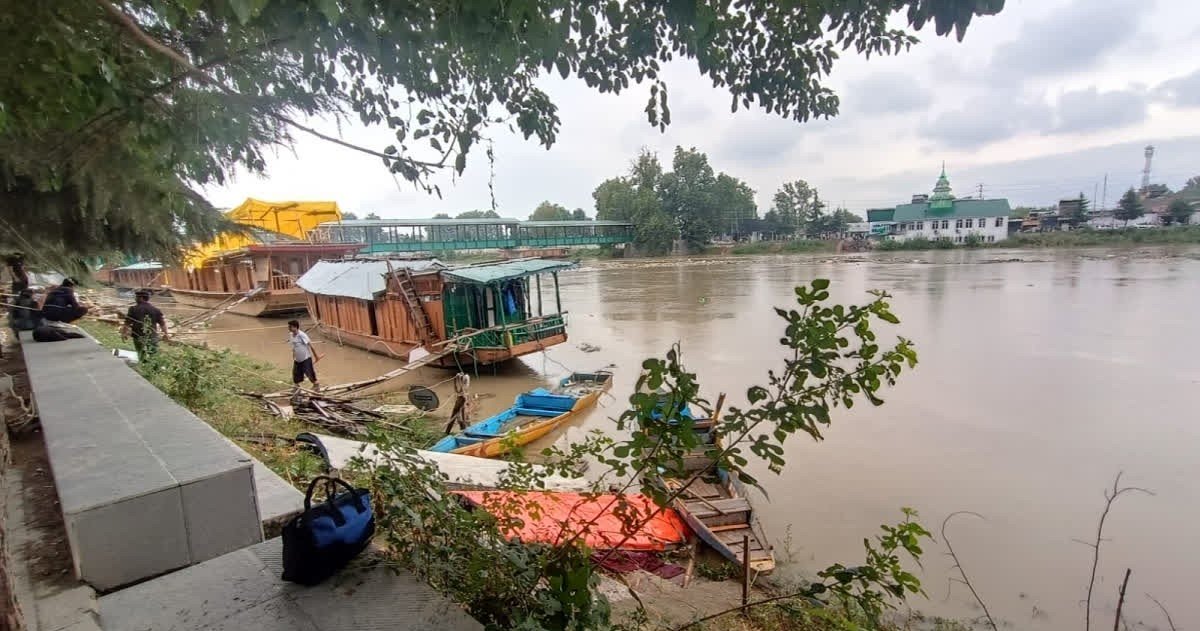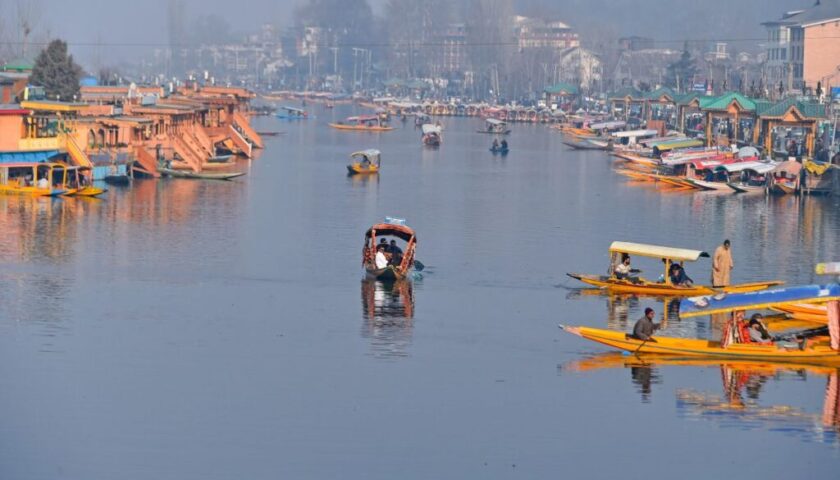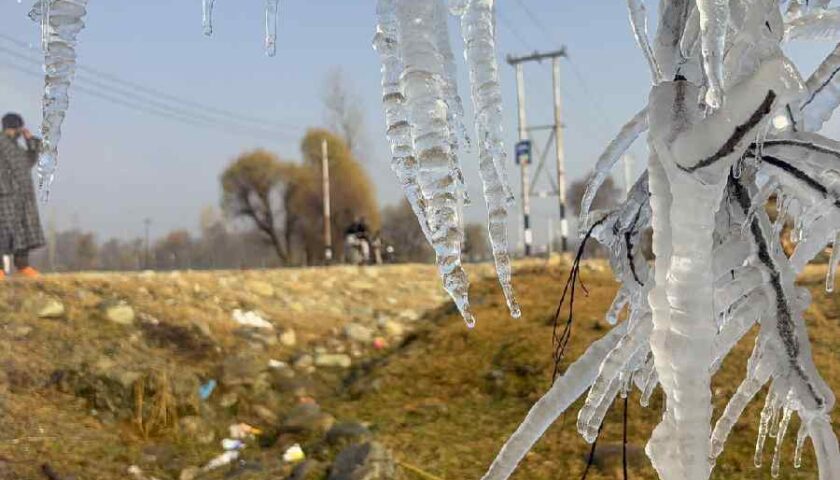Kashmir Floods 2025: Omar Abdullah Promises Mitigation as Vegetable Villages Face Ruin
By: Javid Amin | 06 September 2025
A Valley Revisited by Water
In September 2025, the Kashmir Valley once again found itself submerged—its rivers swollen, its fields drowned, and its people displaced. Eleven years after the catastrophic 2014 floods, which were described as the worst in a century, the region is facing a haunting déjà vu. This time, the damage is concentrated in Kashmir’s famed “vegetable villages”—fertile belts in Anantnag, Kulgam, and Pulwama, where thousands of farmers cultivate produce that feeds not just the Valley but much of North India.
The floods have exposed a painful truth: Jammu & Kashmir’s flood resilience remains dangerously inadequate, and promises made in the aftermath of 2014 have largely evaporated.
The 2014 Deluge: Lessons Unlearned
The 2014 floods were a wake-up call. Over 300 lives were lost, thousands of homes destroyed, and Srinagar’s commercial heart lay underwater for weeks. Experts at the time pointed to:
- Encroachment on floodplains
- Poor drainage systems
- Lack of early warning infrastructure
- Absence of a comprehensive flood mitigation plan
Despite national attention and international aid, many of the proposed flood control measures—like dredging the Jhelum, strengthening embankments, and building retention basins—were either delayed or abandoned. Eleven years later, the same vulnerabilities remain.
Kashmir’s Vegetable Villages: From Fertile to Flooded
Kashmir’s southern districts are known for their high-yield vegetable farming, especially in areas like Bijbehara, Qaimoh, and Zainapora. These villages produce:
- Tomatoes, spinach, radish, turnips, and collard greens
- Supplies for Srinagar’s urban markets and exports to Delhi, Punjab, and Himachal
This year’s floods have submerged over 3,000 hectares of farmland, destroying crops at peak harvest time. The economic loss is estimated to exceed ₹250 crore, with no immediate compensation mechanism in place.
Farmer Voices: Debt, Despair, and Displacement
Farmers in these villages are not just facing crop loss—they’re facing existential ruin. Many had taken loans for seeds, fertilizers, and irrigation upgrades. With their fields underwater, repayment is impossible.
Ghulam Nabi, a farmer from Kulgam, shares:
“We were promised embankments and drainage after 2014. Nothing came. Now my land is a lake, and my debt is a mountain.”
Women farmers, who form a significant part of Kashmir’s agricultural workforce, are particularly affected. Their kitchen gardens, often used for subsistence and small-scale sales, have been wiped out.
Omar Abdullah’s Response: Promises and Plans
Chief Minister Omar Abdullah, visiting flood-hit areas in Anantnag, acknowledged the failure of past governments to implement flood mitigation strategies. He announced:
- A ₹500 crore Flood Resilience Package
- Immediate relief grants for affected farmers
- Fast-tracked dredging of the Jhelum and tributaries
- Creation of community-level flood shelters
- A new Disaster Resilience Task Force with civil society input
While the announcements were welcomed, critics argue that similar promises were made in 2014, and implementation remains the real test.
Infrastructure Gaps: What Went Wrong
Despite repeated warnings from environmental experts, J&K’s flood infrastructure remains fragmented and underfunded. Key failures include:
- Incomplete dredging of the Jhelum River
- Weak embankments in flood-prone zones
- No real-time flood monitoring system
- Unregulated urban expansion into wetlands and floodplains
The Flood Control Department has faced budget cuts and staffing shortages, while coordination between departments—urban planning, agriculture, and disaster management—remains poor.
Climate Change and Himalayan Vulnerability
Kashmir’s flood crisis is not just administrative—it’s ecological. The Himalayan region is warming faster than the global average, leading to:
- Erratic rainfall patterns
- Rapid snowmelt from glaciers
- Increased frequency of cloudbursts and landslides
Experts from the Indian Meteorological Department and TERI have warned that Kashmir is entering a new era of climate volatility, and adaptive infrastructure is now a necessity, not a luxury.
The Role of Urbanization and Land Misuse
Srinagar and its surrounding districts have seen unregulated construction, especially in low-lying areas and wetlands like Bemina, Batmaloo, and Lasjan. These zones once acted as natural flood buffers, but have now been converted into housing colonies and commercial hubs.
The Dal Lake and Wular wetlands, crucial for absorbing excess water, are shrinking due to encroachments and pollution. Without restoring these ecological assets, no flood mitigation plan can succeed.
Disaster Preparedness: Missing in Action
Despite being a disaster-prone region, J&K lacks a robust early warning system. The State Disaster Response Force (SDRF) is under-equipped, and community-level training is minimal.
There is no mobile alert system for flood warnings, and evacuation protocols are unclear. In many villages, residents had no idea the water was rising until it entered their homes.
Civil Society and Local Innovation
Amid the chaos, local NGOs and youth groups have stepped up. Organizations like Kashmir Relief Collective and Green Valley Watch have:
- Distributed food and medical kits
- Created community flood maps using drone footage
- Advocated for wetland restoration and sustainable farming
These grassroots efforts show that resilience is possible—but it needs institutional support.
Policy Recommendations: What Needs to Change
To prevent future disasters, experts recommend:
- Integrated Flood Management Plan with inter-departmental coordination
- Restoration of wetlands and floodplains
- Real-time hydrological monitoring systems
- Climate-resilient farming techniques
- Community-based disaster preparedness programs
- Transparent relief and compensation mechanisms
Conclusion: A Call for Climate Justice
Kashmir’s floods are not just natural disasters—they are failures of governance, planning, and empathy. The submerged vegetable villages are a metaphor for a region drowning in neglect. If the promises made in 2025 echo those of 2014, and if implementation falters again, the Valley will continue to suffer.
Climate resilience must become a political priority, not a seasonal talking point. The people of Kashmir deserve more than relief—they deserve reform.




